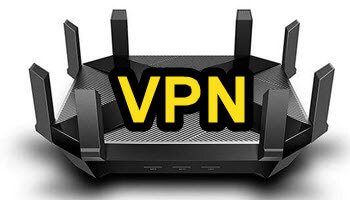I decided to turn my router into a VPN router by adding a VPN client to my home network.
Note: A VPN Client is different than a VPN Server. A VPN Server allows a secure connection to the home network (for access to the home network when traveling, for example). See here for changes I made to my network and VPN Server when there were hacking attempts on my network.
This is a four-part article. In Part 1, I will explain what a VPN is, the reasons to put a VPN on a router, and equipment concerns. In Part 2, I will cover how to add a VPN client to a router and what modifications to make to the default settings. In Part 3, I will cover how to create rules to get traffic to the VPN client and how to manually assign an address to a device on the network. Finally, in Part 4, I will cover how to create rules to bypass the VPN client based on both devices and websites.
Note: In this article, I will show how I set up a VPN client for my equipment, firmware, and VPN provider. Although the specifics for other equipment, firmware, and providers will differ, the general procedures should be similar.
VPN Overview
A Virtual Private Network (VPN) is an encrypted tunnel between a client (in this case, my network) and a server (my VPN provider). There are three main reasons to use a VPN. The first is to get around a firewall. Users in China, for example, can get in trouble for viewing certain data on the internet. The VPN can get around these restrictions. Second, a user may need to change their location to get around location blocks. For example, a user in Argentina can log in to Netflix in the US to watch content that is not available in their country. Finally, to increase privacy. This is the reason I am adding a VPN to my network. A VPN will hide my IP address and location. Anyone looking at my IP address will see the IP address and location of the VPN server, instead. A VPN will also encrypt my DNS activity, so providers will not know which sites on the internet I am going to.
Why Put The VPN On My Router?
There are benefits in adding a VPN client to a router. I can add a VPN application on my computer, but by adding it to my router, all devices on my network will be behind the VPN, even devices that are not capable of running a VPN application. Another benefit is that some VPN providers have a device limit on their plans. By placing the VPN on my router, all my devices are covered by the VPN, but the VPN provider sees this as only one device in use. Finally, the VPN is always on. I do not have to turn it on before I go to a particular site.
There are a few drawbacks to setting up a VPN on a router. First, speeds are slower going through a VPN than not. Second, some services (such as streaming services) and websites will not work when going through a VPN. Not all routers are capable of running a VPN client. And, even if they are, they may not be powerful enough to run a VPN with sufficient speed. Finally, placing a VPN on a router requires setup.
Equipment
A router needs to be capable of running a VPN client. Currently, my network consists of an Asus GT-AC2900 router. I also have an RT-AC86U as a mesh node. These two routers are essentially the same internally, but the GT-AC2900 is the ROC gaming version (has fancier lights). I run Asuswrt-Merlin firmware on them. This is a fork of the original Asus firmware with some extended features. There are 50- 60 devices of various types in my home network. Although my routers can run a VPN client, they are getting old with an original release date of 2017. Asus deprecated them in 2024, so no firmware updates will be released. They can run the older OpenVPN protocol, but not the newer WireGuard protocol. Running a VPN is computationally intensive. I currently have a 350 Mbps internet connection. However, I would only expect these old routers to run around 170- 190 Mbps through the VPN. I will probably upgrade one of them soon.
So, how do you add a VPN client to the router, and what modifications should you make to the default settings? I’ll explain these concepts in Part 2 of this article. Stay tuned!
- Adding A VPN To A Home Network – Part 1 ⬅ You are here
- Adding A VPN To A Home Network – Part 2
- Adding A VPN To A Home Network – Part 3
- Adding A VPN To A Home Network – Part 4
—

Will these instructions work with my Windows7 machine?
Are there any VPN that work with Windows7?
Thanks…
Hi Colin,
This series is about how to turn a home network router into a VPN router. It has nothing to do with Windows.
Hi John,
So will it work with a Windows7 O.S? Or will it still require aWindows10/11 once set up?
Hi Colin,
Again, this setup is not done in Windows. This is done to a home router. If a device connects to an outside network through the router (i.e. with WIFI or a Ethernet cord) then it will work. So, it will work with Win 3, Win 95, Win 7, Vista, Win 10, Win 11, Linux, MacOS, Android phone, iPhone, Amazon Firestick, Samsung TV, Whirlpool refrigerator, LG Dryer, cheap Chinese door camera, etc. Any device that connects to the router.